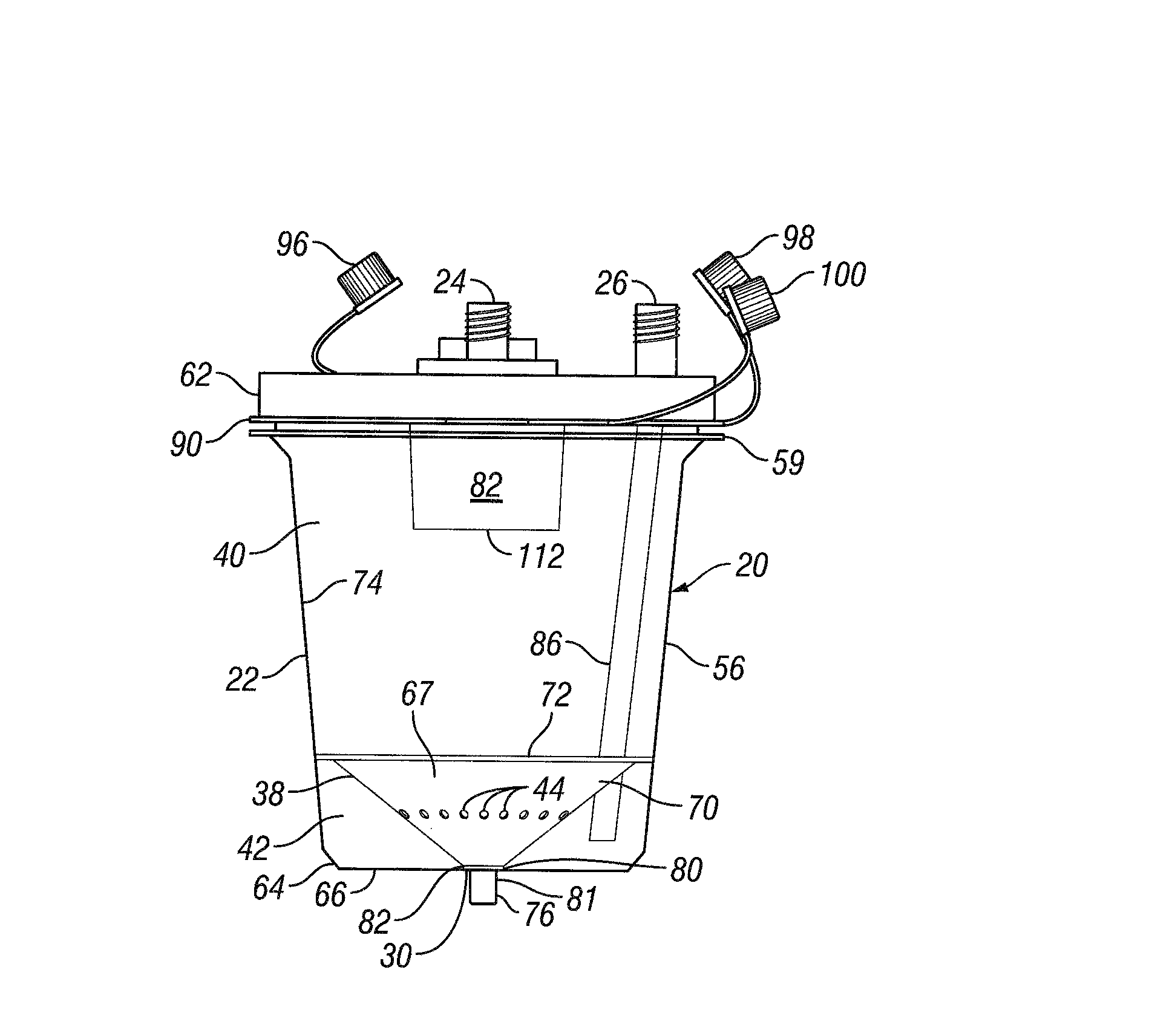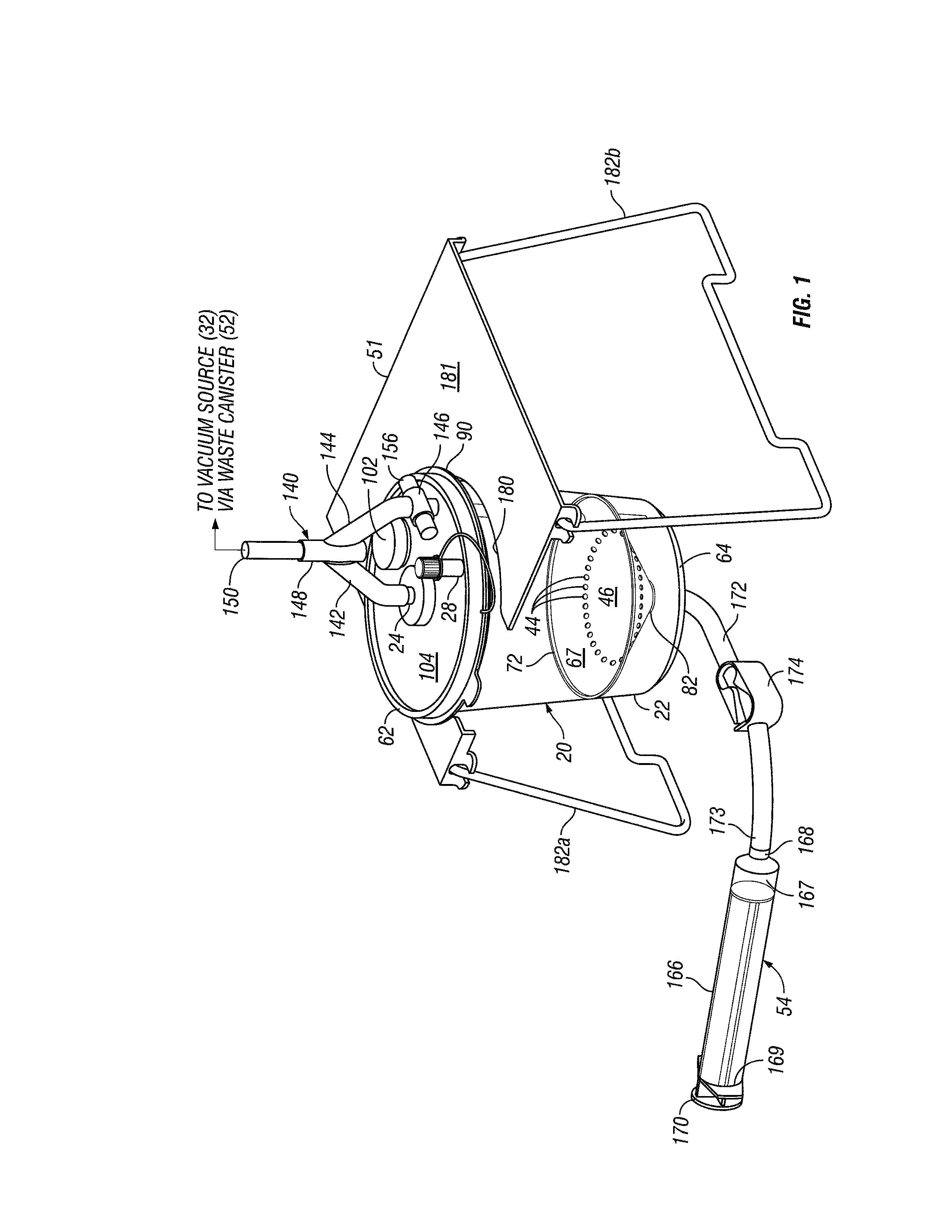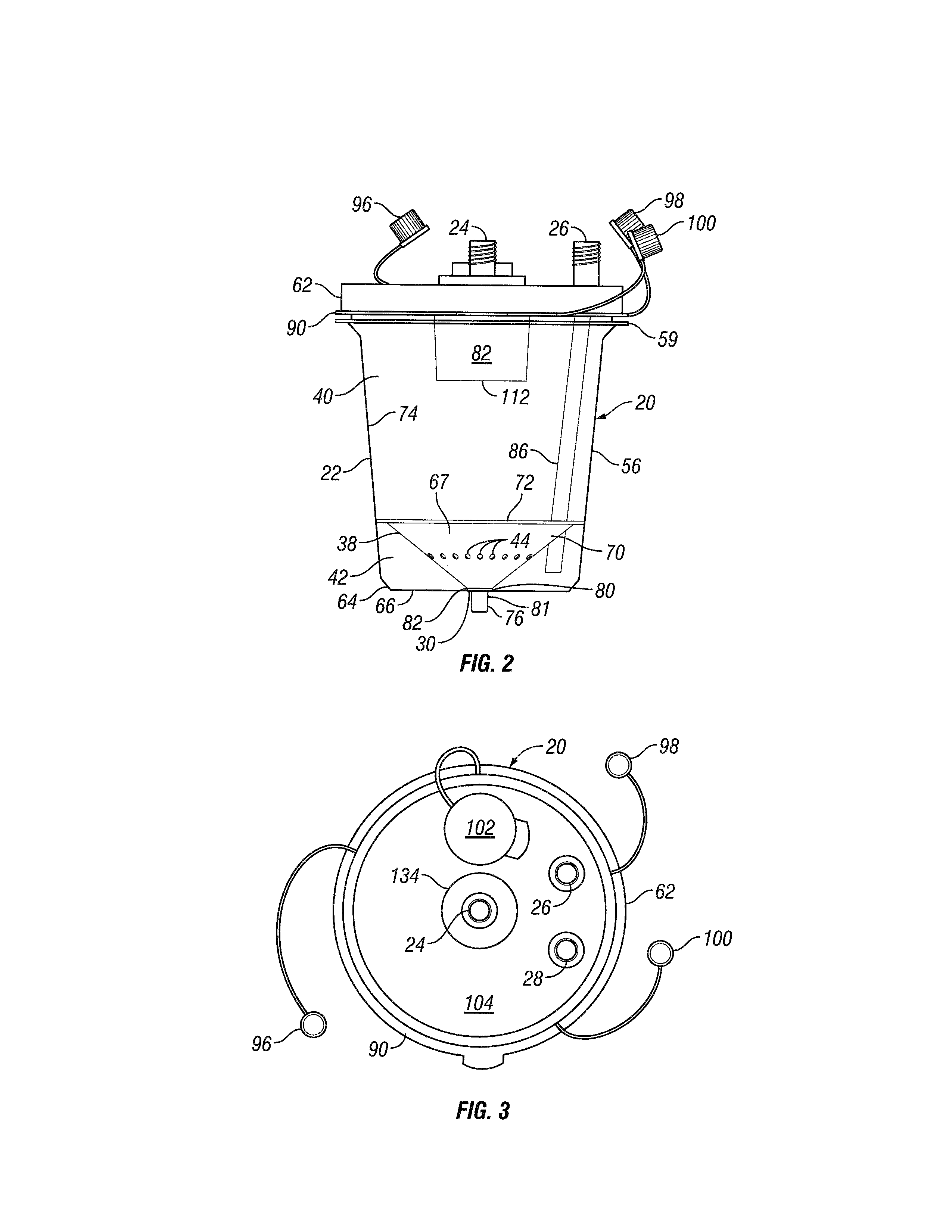Tissue refining device
a tissue refining and tissue technology, applied in the field of tissue refining devices, can solve the problems of reducing the likelihood of tissue rejection, affecting the quality of tissue collection, so as to facilitate the processing of tissue collection
- Summary
- Abstract
- Description
- Claims
- Application Information
AI Technical Summary
Benefits of technology
Problems solved by technology
Method used
Image
Examples
Embodiment Construction
[0047]Referring now to FIGS. 1-7, an exemplary embodiment of a tissue refining device, generally designated 20, and in accordance with the principles of the present invention, is illustrated. Referring specifically now to the views in FIGS. 1-5, in general terms, the tissue refining device 20 includes a canister body 22 that includes a set of four ports, namely, a vacuum port 24, a fluid evacuation port 26, a tissue harvesting port 28, and a tissue retrieval port 30. The vacuum and fluid evacuation ports may be operatively coupled to one or more vacuum sources 32 (FIGS. 16A-C) while the tissue harvesting port may be operatively coupled to a conventional harvesting device 55 (FIG. 16A) to direct a quantity of tissue 36 (FIGS. 12-15 and 16A-C) retrieved by the harvesting device into the canister body when suction or a negative pressure is applied to the vacuum port by the vacuum source. The tissue refining device also includes a separator element 38 dividing the canister body into an ...
PUM
 Login to View More
Login to View More Abstract
Description
Claims
Application Information
 Login to View More
Login to View More - R&D
- Intellectual Property
- Life Sciences
- Materials
- Tech Scout
- Unparalleled Data Quality
- Higher Quality Content
- 60% Fewer Hallucinations
Browse by: Latest US Patents, China's latest patents, Technical Efficacy Thesaurus, Application Domain, Technology Topic, Popular Technical Reports.
© 2025 PatSnap. All rights reserved.Legal|Privacy policy|Modern Slavery Act Transparency Statement|Sitemap|About US| Contact US: help@patsnap.com



